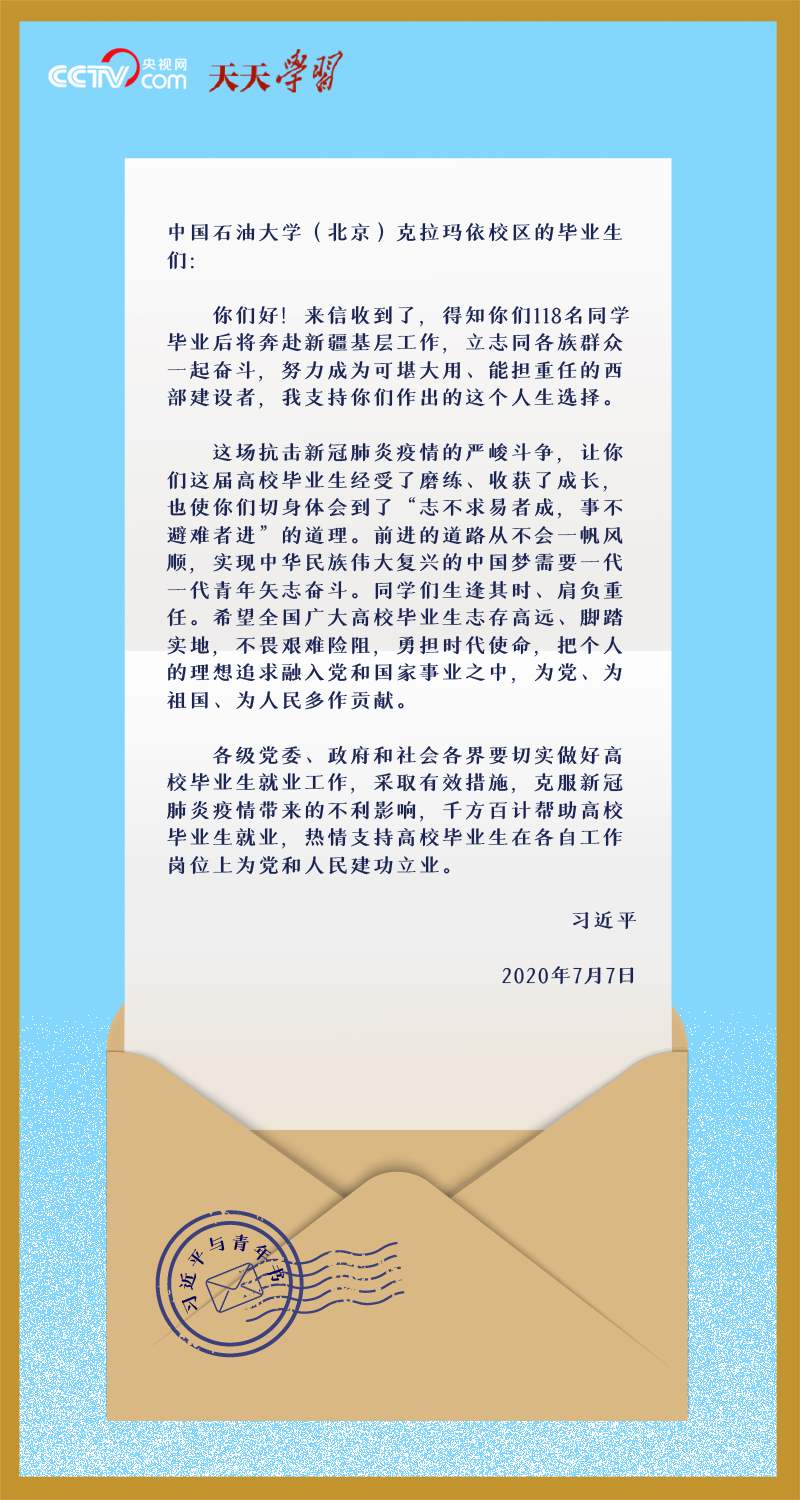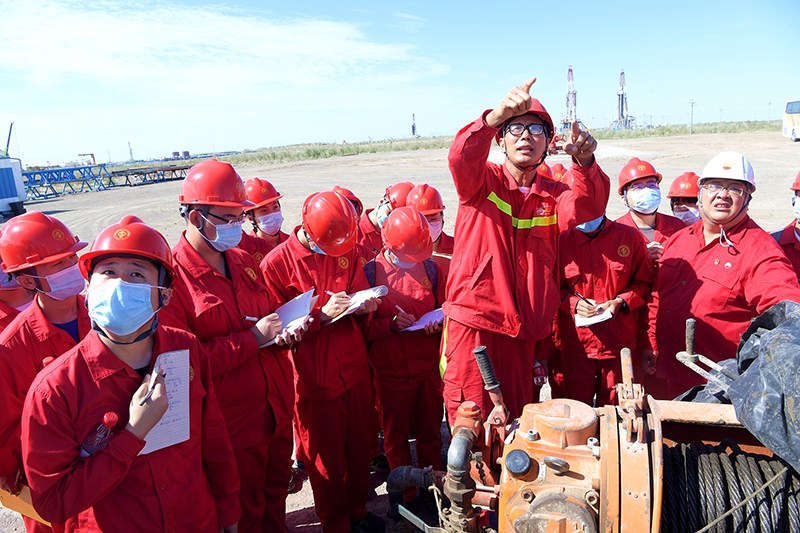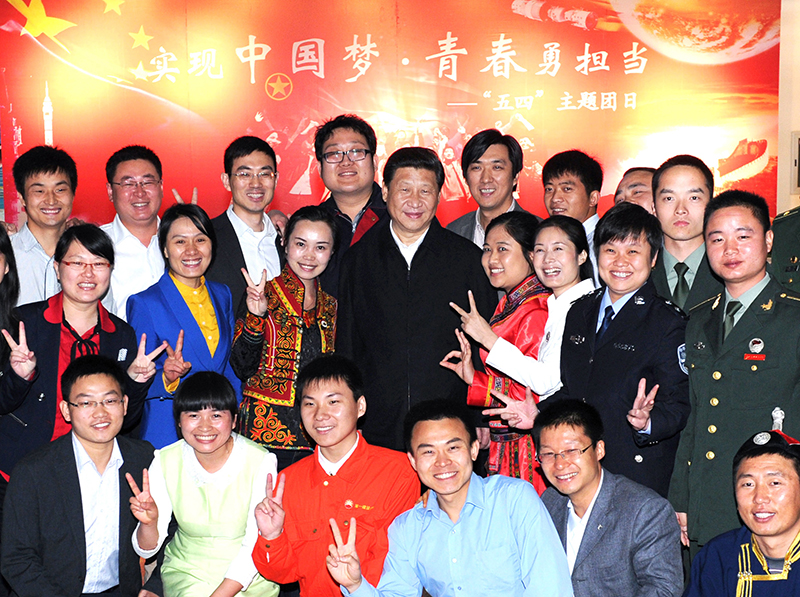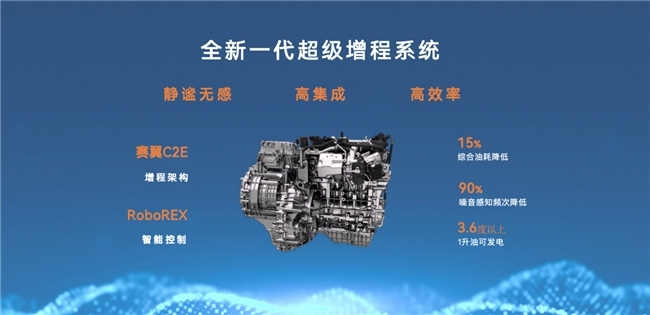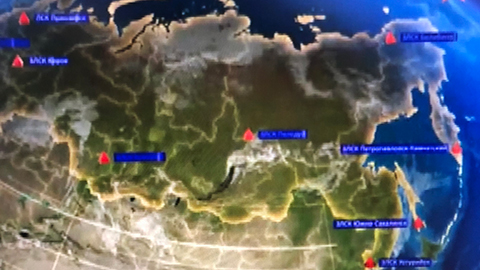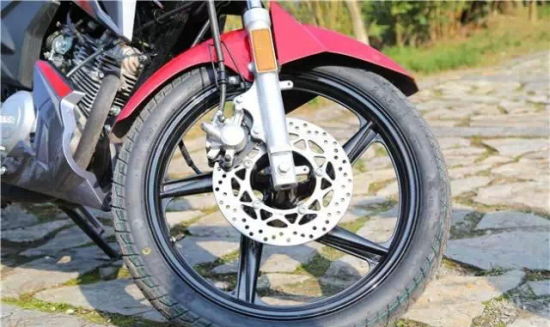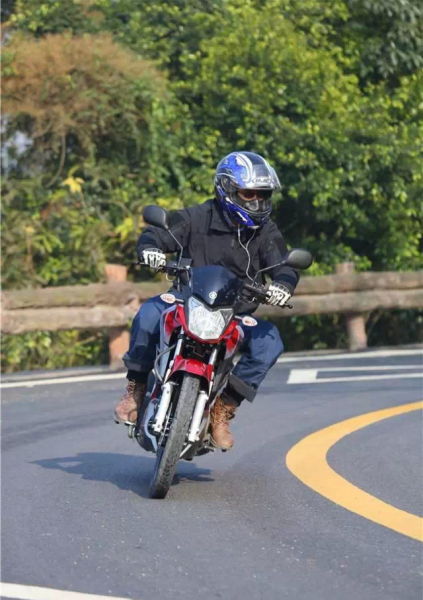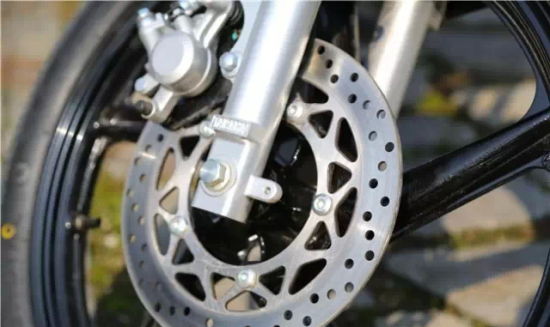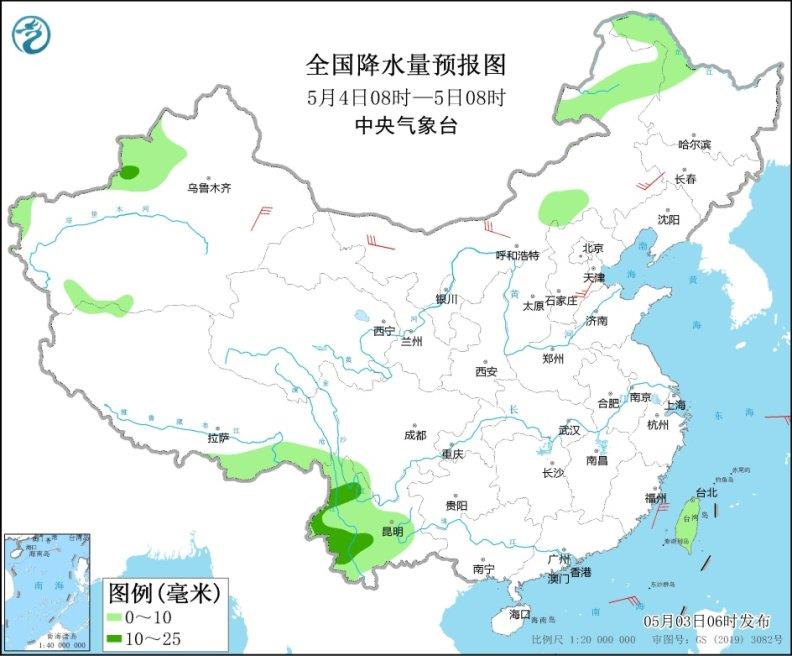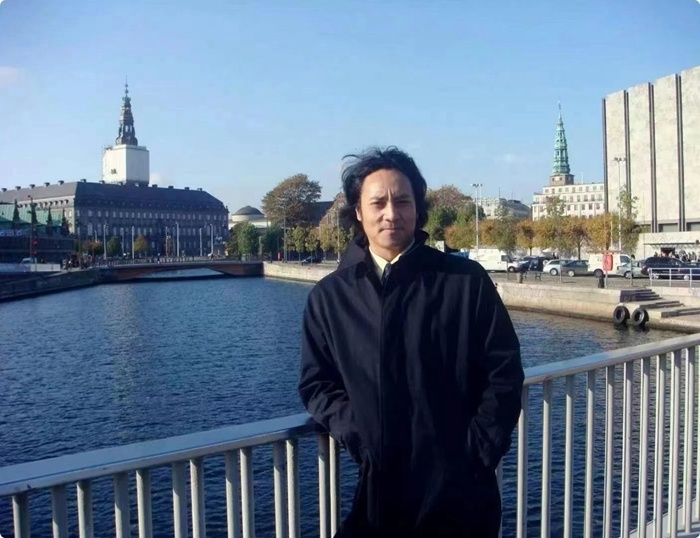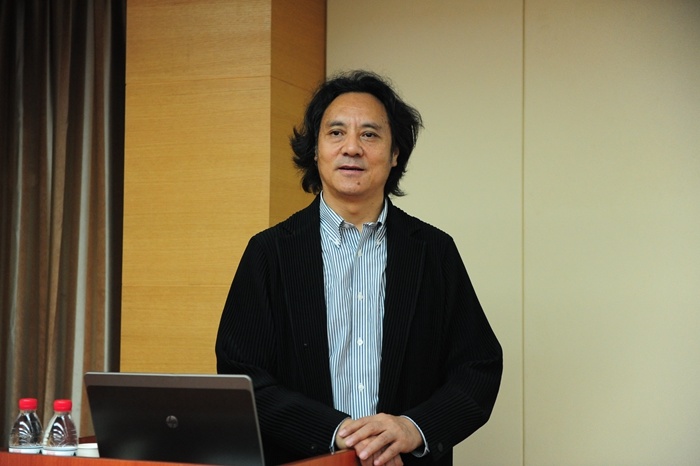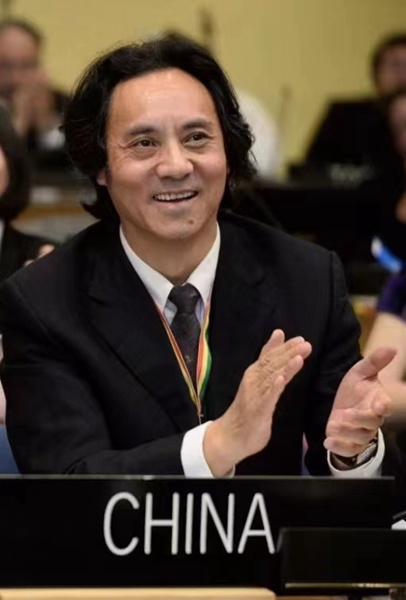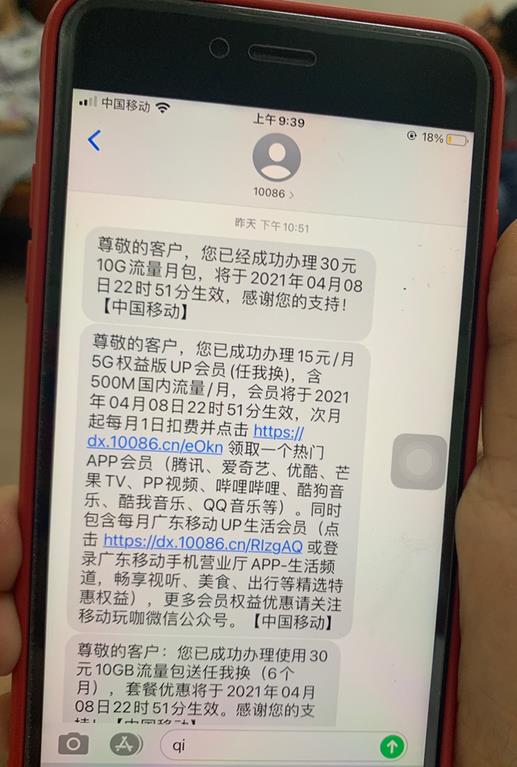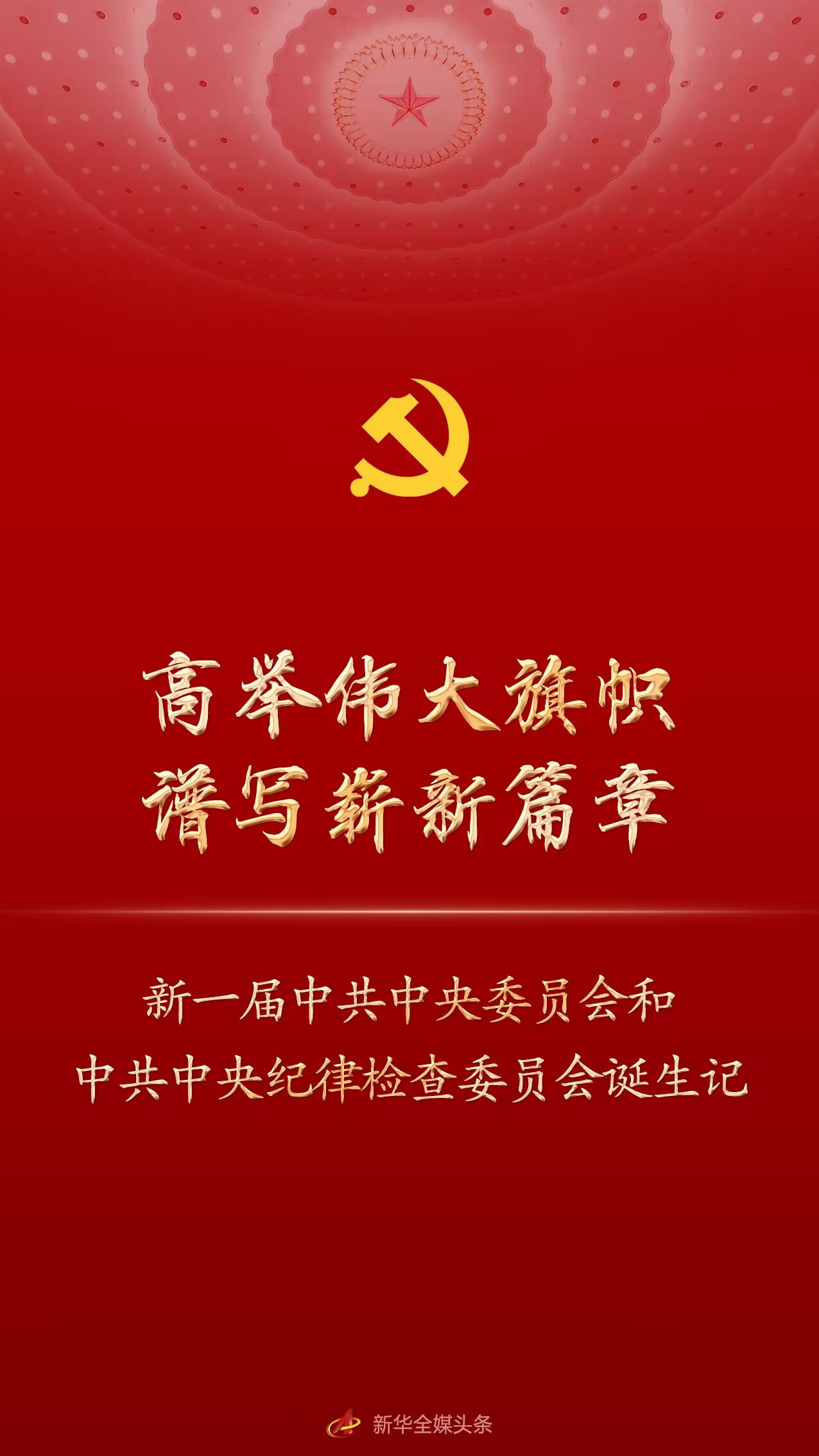
Xinhua News Agency, Beijing, October 22nd Title: Hold high the great banner and write a new chapter — — The birth of the new The CPC Central Committee and the CPC Central Commission for Discipline Inspection
Xinhua news agency reporter
Facing the complicated situation and arduous tasks, our party must have a strong central leadership group if it wants to "ride the fishing boat despite the storm", fully grasp the overall situation of the great rejuvenation strategy of the Chinese nation and the unprecedented changes in the world in the past century, and constantly win new victories in Socialism with Chinese characteristics on the new road of catching the exam.
— — Supreme leader
October 22, 2022, Great Hall of the People in Beijing. More than 2,300 delegates to 20th National Congress of the Communist Party of China (CPC) and invited delegates elected by secret ballot the 20th Central Committee of the Communist Party of China (CPC), composed of 376 Central Committee members and alternate Central Committee members, and the 20th Central Commission for Discipline Inspection, composed of 133 Central Commission for Discipline Inspection.
With the great trust of more than 96 million Communist party member and the ardent expectations of more than 1.4 billion people in China, the new central collective leadership is ready to go, and will lead the whole party and people of all nationalities in China, hold high the great banner of Socialism with Chinese characteristics, fully implement the supreme leader’s Socialism with Chinese characteristics Thought in the new era, carry forward the great party-building spirit, be confident and self-reliant, be upright and innovative, make unremitting efforts and forge ahead bravely, and unite and struggle for building a socialist modern country and promoting the great rejuvenation of the Chinese nation in an all-round way.
Foresight and foresight — — The General Secretary of the Supreme Leader personally planned and deployed, personally guided and checked, and pointed out the correct direction for the personnel preparation work of the 20 th "Two Committees"
After a hundred years of struggle, the Communist Party of China (CPC), the Chinese nation determined to revive greatly, has stood at a new historical juncture — —
In the past 10 years in the new era, under the strong leadership of the CPC Central Committee with the Supreme Leader as the core and through the sustained struggle of the whole party and people of all nationalities, the cause of the party and the country has made historic achievements and undergone historic changes. We have achieved the goal of the first century’s struggle, built a well-off society in an all-round way on the land of China, solved the problem of absolute poverty historically, and are striding forward towards building a socialist modern power in an all-round way.
The 20th National Congress of the Communist Party of China (CPC) is a very important meeting held at the critical moment when the whole Party and the people of all ethnic groups in China have embarked on a new journey of building a socialist modern country in an all-round way and marched towards the goal of the second century. It is related to the cause of the party and the state, the future and destiny of Socialism with Chinese characteristics, and the great rejuvenation of the Chinese nation.
The key to great achievements in the future lies in people.
"The 20th National Congress of the Communist Party of China is at the intersection of two centennials, summing up the first centennial, and at the same time it is the starting point of the new centennial goal. It is very important to open the party’s 20 th National Congress. " General Secretary of the Supreme Leader profoundly pointed out that it is the top priority to do a good job in personnel preparation for the 20th NPC and CPPCC.
Those who are good at governing the country are good at seeking potential; The winner is good at layout.
As early as the end of 2020, the General Secretary of the Supreme Leader and the CPC Central Committee started from the overall development of the cause of the party and the state, and made overall plans for the personnel preparations for the twentieth "two committees" of the party.
In March, 2021, the General Secretary of the Supreme Leader presided over the The Politburo Standing Committee (PSC) Conference and Politburo meeting of the Chinese Communist Party conducted special research, and decided to set up a leading group for inspecting the top 20 cadres, with the General Secretary of the Supreme Leader personally as the leader.
In June, 2021, the The Politburo Standing Committee (PSC) Conference and Politburo meeting of the Chinese Communist Party deliberated and adopted the Opinions on Seriously Doing a Good Job in Personnel Preparation for the 20th NPC and CPPCC.
Since then, over the past year or so, the General Secretary of the Supreme Leader has attended the meetings of principal leaders of provincial and municipal party committees, central and state organs and other units for three times, listened to the reports on personnel preparation of the "two committees" many times, and put forward a series of important requirements, such as adhering to the correct political direction, upholding and strengthening the overall leadership of the party, strictly controlling the political integrity of candidates, establishing a clear orientation in selecting and employing people in the new era, and seriously changing discipline.
The important instructions of the Supreme Leader’s General Secretary have coordinated the overall development of the cause of the Party and the country, focused on the new era and new requirements, scientifically expounded a series of major issues such as the main principles, objectives, tasks and overall requirements of personnel preparation, and pointed out the correct direction and provided fundamental follow-up for doing a good job in personnel preparation for the 20 th "Two Committees".
The CPC Central Committee clearly pointed out that the personnel preparation for the 20th NPC and CPPCC National Committee should hold high the great banner of Socialism with Chinese characteristics, fully implement the Supreme Leader’s Socialism with Chinese characteristics Thought in the new era, focus on the new development stage, implement the new development concept, build a new development pattern, promote high-quality development, and build a socialist modern country in an all-round way. Focus on comprehensively implementing the general requirements of Party building and the Party’s organizational line in the new era, uphold and strengthen the Party’s overall leadership, improve the Party’s long-term ruling ability, maintain the Party’s advanced nature and purity, strengthen the construction of the Central Committee, deepen the new great project of Party building in the new era with the spirit of self-revolution, and continuously consolidate the Party’s ruling position; Focus on the successors and prosperity of the party’s cause, and ensure the long-term stability of the party and the country.
We must adhere to the nature and purpose of the party, adhere to the core position of the party’s leadership, adhere to the authority of the party Central Committee and centralize and unify leadership, and ensure that the party always takes the overall situation and coordinates all parties; Adhere to the standards of Marxist politicians group, adhere to the policy of "four modernizations" of cadres, adhere to having both ability and political integrity, put morality first, appoint people on their merits, adhere to the standards of good cadres in the new era and the requirements of loyalty and cleanliness; Adhere to the principle of democratic centralism, give full play to inner-party democracy, follow the mass line, and further improve the quality and effectiveness of democracy; Adhere to the good experience and good practices of personnel preparation in recent sessions, especially in the 19th session of the "Two Committees", adhere to the goal orientation and problem orientation, adhere to the systematic concept, make overall consideration and overall arrangement, and make careful arrangements, elaborate organization and orderly progress.
Facing the new situation and new tasks, the CPC Central Committee clearly pointed out that the new Central Committee should shoulder the historical mission of coordinating the overall situation of the great rejuvenation strategy of the Chinese nation and the unprecedented changes in the world in the past century, and unite and lead the whole party and the people of all nationalities in the new journey to promote the all-round construction of a socialist modern country, which should be:
— — A group of politicians armed with Marxism–Leninism, Mao Zedong Thought, Deng Xiaoping Theory, Theory of Three Represents, Scientific Outlook on Development and Socialism with Chinese characteristics, the supreme leader of the new era, with excellent politics and firm beliefs, resolutely implementing the party’s basic theory, line and strategy, strengthening the "four consciousnesses", strengthening the "four self-confidences" and achieving the "two safeguards";
— — Do not forget your initiative mind, a politician group that keeps in mind the mission, serves the people wholeheartedly, is United and strong, is United with one heart and one mind, has the courage to take responsibility, works hard, dares to struggle, is good at fighting, has an excellent style, is honest and clean, and is trusted and supported by the whole party and the people of all ethnic groups throughout the country;
— — A group of politicians who are always in the forefront of the times, able to control complex situations, respond to various risk challenges, be good at governing the party, the country and the army, and constantly promote new victories in the cause of Socialism with Chinese characteristics in the new era.
The key to building such a politician group is to select and employ people with higher standards and stricter requirements.
"It should be measured according to the standards of Marxist politicians." The CPC Central Committee proposed that the quality requirements of the candidates of the CPC Central Committee and the alternate CPC Central Committee should be particularly emphasized — —
Take the lead in adhering to Marxism–Leninism, Mao Zedong Thought, Deng Xiaoping Theory, Theory of Three Represents, Scientific Outlook on Development and Socialism with Chinese characteristics Thought of the Supreme Leader in the New Era, fully implement the Party’s basic theory, basic line and general plan, have the lofty ideal of communism and the common ideal of Socialism with Chinese characteristics, have a high theoretical accomplishment of Marxism-Leninism, and can consciously arm their minds, guide practice and promote work with the Party’s innovative theory.
Take the lead in strengthening "four consciousnesses", strengthening "four self-confidences" and achieving "two maintenance". Political firmness, loyalty to the party, strong political judgment, political understanding and political execution, clear-cut stand on major issues, stand the test of storms at key moments and major events, and resolutely maintain a high degree of ideological and political action with the CPC Central Committee with the supreme leader as the core.
Take the lead in implementing the major decision-making arrangements of the CPC Central Committee, be mindful of "the leader of the country", make overall plans to promote the "five in one" overall layout and coordinate the promotion of the "four comprehensive" strategic layout, unswervingly stand on the new development stage, implement the new development concept, build a new development pattern, promote high-quality development, have the ability to lead the modernization drive, be able to make overall plans for development and security, solve difficult problems in reform, and respond to various risk challenges, and have a high professional level and rich practice.
Take the lead in adhering to principles, dare to take responsibility, be good at studying and emancipating the mind, be determined to reform, blaze new trails, be strong in fighting spirit, dare to fight, be good at fighting, be pragmatic and positive, have a strong revolutionary enterprising spirit, and make achievements in their work that can stand the test of practice, people and history.
Take the lead in respecting and implementing party constitution, adhere to democratic centralism, be fair and upright, be broad-minded, and be good at working together, including working together with comrades who have different opinions. Keep in mind the initial mission, persist in taking the people as the center, carry forward the glorious tradition and fine work style of the Party, consciously implement the Party’s mass line, practice "three strictness and three realities", keep close contact with the masses and serve the people wholeheartedly.
Take the lead in strictly observing the party’s discipline and rules, abide by the eight central regulations and the rules of honesty and self-discipline, have good moral cultivation, be honest and upright, and have high prestige inside and outside the party.
Strictly administering the party in an all-round way is always on the road, and managing the party cannot be relaxed for a moment.
The new Central Commission for Discipline Inspection has an important responsibility to strictly manage the Party in an all-round way, strictly observe the Party’s discipline and rules, safeguard the Party’s unity and unity, strengthen the building of a clean and honest party style, and maintain the Party’s advanced nature and purity, which should be — —
Firmly safeguard the core position of the Supreme Leader General Secretary of the CPC Central Committee and the whole Party, firmly safeguard the authority of the CPC Central Committee and centralize and unify leadership, resolutely implement the Party’s line, principles and policies, firmly implement and faithfully defend party constitution, adhere to the leadership collective with firm ideals and beliefs, strong party spirit, fairness and decency, dare to adhere to principles, and be brave and good at resolutely fighting against all kinds of violations of party rules and regulations and unhealthy practices in party constitution.
The Party Central Committee places special emphasis on the quality requirements of the candidates for the Central Commission for Discipline Inspection: political firmness, loyalty to the party, conscientiously implementing the party’s policy of managing the party in an all-round way, resolutely safeguarding party constitution and other party internal laws and regulations, adhering to principles, daring to take responsibility, fulfilling their duties, being brave in showing their swords, seeking truth from facts, being strict in discipline, and resolutely fighting against all kinds of party discipline violations and corruption in party constitution; High policy level, strong sense of discipline, comprehensive and correct implementation of the party’s principles and policies, able to responsibly carry out supervision and accountability for discipline and undertake party discipline cases, take the lead in safeguarding the authority of the CPC Central Committee and centralized and unified leadership, firmly safeguard the seriousness of party discipline, and earnestly safeguard party member’s democratic rights and the interests of the people; Take the lead in strictly observing the party’s discipline and rules, abide by the spirit of the eight central regulations and the rules of honesty and self-discipline, be strict with yourself, be fair and upright, be honest and upright, and have high prestige inside and outside the party.
In July, 2021, the leading group for the inspection of 20 cadres deliberated and adopted the General Plan for the Inspection of Candidates for the 20th "Two Committees", and made specific arrangements for the main tasks, the allocation of nomination places, the inspection methods and steps, and the organization and implementation of the inspection.
From the end of July 2021, the central government sent 45 inspection teams in three batches to inspect 31 provinces, autonomous regions and municipalities, 124 central and state organs, central financial enterprises, central enterprises in Beijing and other units. The Central Military Commission also sent eight inspection teams to inspect 25 military commission organs, departments and large units of the whole army.
Talk, research and recommendation, determine the object of investigation, make an in-depth investigation, put forward a list of suggestions for selecting objects, and put forward ‘ Two committees ’ List of candidates for candidate preparation "… … The recommendation, inspection and nomination of candidates for the "two committees" were carried out in an orderly and solid manner in strict accordance with the steps and methods stipulated by the central authorities.
Take a clear-cut stand and strengthen leadership — — Give full play to the leading and checking role of party organizations, and do not engage in "sea push" and "sea election" to further improve the quality and effectiveness of democracy.
"Upholding and strengthening the overall leadership of the Party is an important advantage for us, and it is also an important experience summed up in previous general elections". "We should give full play to the leading and gatekeeper role of the Party organizations and refrain from engaging in ‘ Haitui ’ ‘ Audition ’ , we must not simply win people by votes ","the leadership of the Party and democracy are unified, not antagonistic, and they cannot be neglected. We must determine a reasonable democratic way, improve the inspection methods, and further improve the quality and effectiveness of democracy "… …
The important instructions of the Supreme Leader General Secretary profoundly clarified the extreme importance of upholding the Party’s leadership and revealed the dialectical unity relationship between the Party’s leadership and promoting democracy.
Give an outline and read it, solve a volume and make it clear to all. The personnel preparation work of the 20th "Two Committees" has clearly adhered to and strengthened the Party’s overall leadership in all aspects of the whole process, and unswervingly implemented the principle of the Party’s management of cadres.
The inspection work has always been carried out under the centralized and unified leadership of the CPC Central Committee — —
Looking through the documents and materials of the inspection work and reviewing the whole process of the inspection work, we can clearly see: from the main tasks and contents of the inspection work, to the allocation of nomination places and the determination of inspection units, to the methods, steps and specific requirements of the inspection … … The proposal of every policy opinion, the formulation of every plan and the implementation of every work are carried out under the centralized and unified leadership of the CPC Central Committee.
The leading group for the inspection of 20 leading cadres has held 13 leading group meetings, 5 training sessions and symposiums, thoroughly studied and implemented the spirit of the important instructions of the Supreme Leader General Secretary, accurately grasped the requirements of the CPC Central Committee, consciously compared the standards and tables, and carried out the decision-making and deployment of the CPC Central Committee to the letter.
Do not engage in "sea push" and "sea election", and give full play to the role of conversation and research — —
A heart-to-heart talk, which lasted for 3 hours, is still not over. The inspection team came straight to the point and targeted, not only talking about the inspection requirements, but also asking questions in time; The interviewee is practical and realistic, answers questions, not only recommends candidates, but also introduces the situation comprehensively.
This is a scene in the process of inspecting the candidates for the 20th "two committees". Every time I go to a place or a unit, the investigation team will carry out such talks and investigations.
After the inspection team arrived in provinces, autonomous regions and municipalities, they first conducted talks and research in a certain range, and on the basis of extensive listening to opinions, they put forward a reference list of meeting recommendations, and then made meeting recommendations. According to the investigation of the conversation, the recommendation of the meeting and the usual situation, talk again and listen to opinions further. Through comprehensive analysis and comparison, the list of investigation objects is put forward according to the procedure. In-depth investigation and conversation, we will also talk to some bureau-level cadres and even county-level cadres.
In the investigation of the candidates for the "two committees" of the central and state organs, the investigation team conducted in-depth talks and investigations based on the actual situation of the unit and the representativeness, knowledge and relevance.
"Participants should not only talk about ‘ Head ’ We must also talk responsibly about the reasons for recommendation and introduce the candidates’ morality, ability, diligence, performance and honesty in depth. " A comrade who participated in the inspection said that through in-depth talks and research, each interviewee made recommendations responsibly, and his opinions were more fully expressed and the recommendation results were more realistic.
It is understood that in this investigation, the inspection teams of provinces, autonomous regions and municipalities talked more than 1,400 times per group on average, and the inspection teams of central and state organs talked nearly 10,000 times.
Whether it’s talk research or meeting recommendation, it’s not simply based on the number of votes, but on the basis of the candidate’s ability and political integrity and consistent performance, combined with the integrity and democratic evaluation, etc., comprehensive analysis and judgment are made to make a comprehensive, objective and accurate judgment, which is better than choice, and put forward suggestions for candidate selection.
The inspection team earnestly performed their duties, strengthened communication and coordination with the Party Committee (Party Group), and jointly made a good pass — —
During the inspection work, each inspection team strictly implemented the requirements of the CPC Central Committee, insisted on handling affairs according to policies, principles and procedures, and did every step and every link in detail. Adhere to the standard conditions, choose the best from the best, do not degrade, and strictly control the quality of good candidates.
The inspection team strengthened communication with the Party Committee (Party Group), and studied and discussed key links and important work together. The Party Committee (Party Group) actively cooperated with the inspection team, seriously assisted in the investigation and verification of the relevant issues raised by the inspection team, and strictly reviewed and checked the relevant materials provided.
One candidate ranked high in the recommendation of the meeting, which also met the needs of the relevant structure, but when we talked again, everyone had different opinions on his moral and political integrity and work table. After in-depth understanding and careful study, the investigation team did not degrade itself, and finally did not include it in the list of investigation objects.
During the inspection in a certain unit, the inspection team noticed two candidates. Although one candidate is older, he has worked in concentrated contiguous destitute areas for many years, with hard work, outstanding achievements and high recognition from the masses. The recommendation of another candidate is good, but his work experience is relatively simple and he lacks the experience of major struggles. The investigation team communicated with the party Committee in time, and after repeated comparisons, the former was finally decided as a candidate.
During the whole inspection, the list of candidates was submitted for approval in strict accordance with the procedures, and was finally determined by the CPC Central Committee — —
Put forward the reference list recommended by the meeting, determine the list of inspection objects, and put forward the selection opinions of the candidates for the "two committees". The inspection teams were reported to the leading groups of the top 20 cadres for examination and approval.
The leading group of the top 20 cadres has held five meetings to listen to the reports of the inspection teams one by one; The Politburo Standing Committee (PSC) specially arranged six meetings to listen to the report.
"The most prominent feature of cadres’ work in recent years is to uphold the leadership of the party in a clear-cut manner, adhere to the principle of party management of cadres, and give full play to the leadership and gatekeeper role of party organizations." A member of the inspection team who has participated in the inspection work many times said, "This inspection insisted on not doing ‘ Haitui ’ ‘ Audition ’ Giving full play to the role of conversation and research not only improves the quality and effectiveness of democracy, but also further enhances the scientific and accurate selection and employment. "
Adhere to standards and strictly control — — Put political standards first, strictly control political integrity, and select good cadres who are trustworthy, reliable and hard-working for the party and the people.
"The first thing in selecting and employing people is political standards." The General Secretary of the Supreme Leader stressed that if we can’t get into the "two committees", we can’t sit in the right place, take it for granted, and follow the usual practice. First of all, we must meet the political standards, deepen the investigation of political quality, avoid superficiality and formalization, and make it tangible.
"Political issues are very concealed and confusing, and it is a difficult problem to test the political quality." Comrades of the inspection team introduced that this inspection summed up the practical experience in recent years and further made a thorough investigation of political quality.
Highlight the key points of investigation — — Pay attention to the political stance, attitude, consciousness, judgment, understanding and execution, and see how to understand the "two establishments", whether to strengthen the "four consciousnesses", strengthen the "four self-confidences" and achieve the "two safeguards", maintain a high degree of ideological and political consistency with the CPC Central Committee with the supreme leader as the core, resolutely implement the decision-making arrangements of the CPC Central Committee, and strictly abide by the party’s political discipline and rules.
The inspection team generally regards the implementation of the spirit of the important instructions of the General Secretary of the Supreme Leader as an important part of inspecting the political quality of the candidates, and deeply understands the attitude, measures and effectiveness of implementation.
Combined with the actual situation of local and central units, detailed investigation of specific content, so that political standards are concrete and distinct:
Some inspection teams combined with the actual situation of provinces, autonomous regions and municipalities, paid attention to the measures and effects of winning the battle against poverty, implementing the strategy of regional coordinated development, and strengthening ecological environment protection;
Some inspection teams, combined with the actual situation of the department, pay attention to understanding whether they dare to fight and are good at fighting in dealing with US and Western sanctions and safeguarding national security, and whether they are brave and enterprising in promoting scientific and technological innovation and overcoming key core technologies that are "stuck in the neck";
When inspecting state-owned enterprises, some inspection teams focus on whether to consistently uphold the party’s leadership over state-owned enterprises and establish a modern enterprise system, and on their role in building a new development pattern, promoting high-quality development, upgrading the modernization level of industrial chain supply chain, and serving the national economy and people’s livelihood … …
Improve the way of inspection — — Combining with the study of the Party’s innovation theory, specific work performance, daily performance and historical performance, combined with the performance of coping with major struggles and accomplishing urgent and dangerous tasks, close inspection, multi-angle analysis and concrete evaluation, focusing on observing and identifying from facts, facts and achievements, not only depends on how it is said, but also depends on how it is done.
In all aspects of the inspection work, political checks should be strengthened, and when conducting interviews, face-to-face talks, in-depth inspections and collective interviews, the political performance of the candidates should be deeply understood in the light of "reference questions for political quality inspection".
Some inspection teams braved the cold of MINUS 20 degrees Celsius to conduct on-the-spot investigation in mining areas at an altitude of more than 4,300 meters to understand the measures and effectiveness of implementing the requirements of the CPC Central Committee’s inspection and rectification, and identify the political attitude, political responsibility and political ability of leading cadres;
Some inspection teams went deep into urban flood control subway stations, important river embankments, and the front line of epidemic prevention and control, and made on-the-spot investigations on the performance of cadres in flood control and emergency rescue, and fighting the epidemic.
Comprehensive analysis, careful screening and strict control of the political quality and performance of the candidates, those who are politically unqualified, have problems such as "seven things", engage in "two-faced" and "two-faced" will be rejected by one vote.
Strict integrity is the bottom line requirement for selecting and employing people. The CPC Central Committee stressed that there must be "zero tolerance" on the issue of honesty, and candidates with serious injuries and hidden injuries should not be brought in.
The inspection work adheres to the "four musts" verification requirements, that is, cadres’ files must be examined, reports on personal matters must be checked, opinions of discipline inspection and supervision organs must be listened to, and letters and visits with verifiability must be investigated. Strictly fulfill the responsibility of integrity, implement the "double signature" regulation of the party Committee (party group) secretary and the discipline inspection and supervision team leader, comprehensively use the results of inspections, letters and visits, audits, etc., fully understand the integrity of candidates, and effectively prevent "nomination with illness".
The inspection also took some new measures in the integrity check:
— — Send the recommended reference list of provincial and municipal conferences to the State Supervision Commission of the Central Commission for Discipline Inspection in advance for preliminary judgment, and communicate with the State Supervision Commission of the Central Commission for Discipline Inspection on the party style and clean government again when determining the nominees of the "two committees";
— — When checking personal matters, appropriately expand the geographical scope of real estate inspection;
— — Pay attention to understand the behavior of leading cadres’ spouses, children and their spouses in doing business.
For enterprise leaders and representative candidates, we also listen to the opinions of administrative law enforcement, industry supervision and other departments.
After the completion of each link, the inspection team communicated with the relevant discipline inspection and supervision organs in a timely manner about the party’s work style and clean government, and verified the problems one by one; Some carry out cross-examination and collective judgment on difficult issues on cadre files; On the receipt of letters and reports, in accordance with the cadre management authority in a timely manner to the relevant departments to verify and handle, put forward concluding comments.
A cadre has a high number of votes in conversation, research and meeting recommendation, but there are doubts about integrity, which is difficult to find out at the moment. Can such cadres be candidates? The investigation team was firm and strict, and did not list it as the object of investigation.
During the inspection of the candidates for the 20th "Two Committees", 1,007 people were asked for opinions on the candidates for the "Two Committees" from the State Supervision Committee of the Central Commission for Discipline Inspection, and 731 people were checked for personal reports. After strict checks, more than 20 candidates were not listed as the objects of inspection and selection.
Many cadres reported that this inspection was "serious and strict" in selecting candidates for honesty, which reflected the clear attitude of "zero tolerance" on honesty and reflected the firm determination of the CPC Central Committee to strictly manage the party in an all-round way.
Accurate science examination — — All-round multi-angle three-dimensional inspection, comprehensive historical dialectical evaluation, and accurate identification of candidates
Proper use of people, the first is to know people.
Accurate and scientific selection and employment is an important requirement of the Supreme Leader General Secretary for cadre work. He stressed that it is necessary to adhere to accurate science, know people by governors, and select cadres accurately.
During the inspection of candidates for the 20th "Two Committees", each inspection team earnestly implemented the important requirements of the Supreme Leader General Secretary, closely combined with the actual situation of the inspection unit, talked deeply, asked carefully, looked carefully and checked repeatedly, and got a comprehensive and in-depth understanding of the performance of the candidates.
Make efforts to improve the quality of conversation — —
Investigation conversation is a science and an art. Only by talking accurately, deeply and pertinently can we talk about the truth and hear the truth.
In the preparation of the conversation, do your homework in advance, and tailor the specific conversation outline in combination with the actual situation of the unit, the object of investigation, and the interviewer to enhance pertinence and accuracy;
In the way of conversation, create a good conversation atmosphere, and comprehensively use the methods of questioning, communication and interaction to let the interviewees dispel their worries and open their hearts, talking about the advantages and disadvantages of the candidates, both qualitative opinions and concrete examples;
In talking time, we should insist that time is subordinate to quality, do not hurry up, do not limit the talking time, ask the right questions and understand them thoroughly.
"The conversation should be gradually deepened and be good at capturing key information." A member of the investigation team introduced, "Especially for those who are hesitant and have something to say, pay attention to the voice, pick up the conversation, and grasp ‘ Thread head ’ If you ask down, you can often learn more. "
In a conversation, the investigation team keenly captured such a "thread": when talking about the responsibility of an object under investigation, a talker obviously became hesitant. The investigation team realized that there might be something else. Sure enough, after further guidance and inquiry, the interviewer reflected that the subject was mentally deficient and told specific examples.
Work hard on a comprehensive and in-depth understanding — —
Talk in the house and watch it on the spot. The investigation team visited the industrial development, ecological management and people’s livelihood projects in depth and intuitively felt the effectiveness and performance of the work; Random interviews in rural communities, window units and offices to understand the style of cadres and the reputation of the masses; Conduct home visits, collect Internet information, and learn about the family style and the situation eight hours away … …
Strengthen and improve the extended inspection, and expand the scope and chain of extended inspection. According to the specific situation of the investigation object, those who have served in the current post and the previous post for less than two years will have to go to the previous post for investigation. Those who have reflected on political conduct, honesty, etc. and heard the reflection during this inspection, go to the relevant units for targeted inspection.
According to statistics, during the inspection of candidates for the 20th "Two Committees", more than 220 candidates were extended to inspect.
In a certain province, the investigation team went to 14 cities and 33 provincial units to understand the situation.
After the political voice went, public opinion was chatting. Through follow-up, cadres’ long-term performance is more distinct and three-dimensional.
Work hard on comprehensive analysis and judgment — —
Comrades of the inspection team inspected the conversation during the day and got to know the situation, and held a meeting at night to sort out the materials and consult and analyze. We will sort out and summarize the information in various stages and channels in time, and complement each other with the usual situation, the unit and the team, and combine understanding people with understanding things to comprehensively judge the candidate’s morality, ability, diligence, performance and honesty.
Work hard on writing good investigation materials — —
Each investigation team carefully wrote and polished it repeatedly, and the team leader and deputy team leader personally revised and strictly controlled it, focusing on the main characteristics and behavioral characteristics of the candidates, paying attention to supporting their views with specific examples, and striving to be distinctive, accurate, realistic, objective and pertinent.
A staff member of the inspection team introduced that a certain feature of the candidate in the inspection materials is often shown from multiple angles and with specific examples. "Familiar people know who it is at a glance, and unfamiliar people see it at a glance."
"This investigation, the conversation was deep, the scope was wide, and the information was rich. Many real situations and real problems were found, and the understanding of the candidates was more comprehensive and accurate." A member of the investigation team was deeply touched.
Inspection work is an important practice of political life within the Party, and it is also an important test of the political ecology within the Party and the awareness of discipline and rules of party member cadres.
At the beginning of the inspection of candidates for the 20th "Two Committees", General Secretary of the Supreme Leader emphasized that "the general trend of transition is the weather vane of political ecology, and we should adhere to the strict main tone, put political discipline and rules ahead, and take severe measures to deal with such things as running officials and officials, buying and selling officials, pulling gangs and engaging in private activities" and "we should take the most resolute attitude and measures to stop bad style and ensure that.
The inspection work resolutely implemented the spirit of the important instructions of the Supreme Leader General Secretary and the requirements of the CPC Central Committee, put strict discipline throughout the inspection work, insisted on giving priority to education, warning and prevention, profoundly learned lessons from cases of soliciting votes and bribing elections in Hengyang, Hunan, Nanchong, Sichuan and Liaoning, educated and guided party member cadres, especially leading cadres, to consciously abide by the rules and discipline, at the same time strengthened supervision and inspection, unblocked supervision channels, and always maintained a high-pressure situation of punishing unhealthy practices.
"Don’t travel alone, don’t meet people in private", "Don’t leave a word when you go out, and don’t leave a piece of paper in the room". The comrades in the investigation team strictly demand themselves to be strictly confidential and permanent, watertight and foolproof.
"If you don’t inform the conversation this time, you don’t know that the inspection team has already entered." A local cadre was deeply impressed that there was no big movement during the whole inspection. Everyone was relatively calm and calm, and they were able to correctly treat the advance and retreat and stay in the turn, and they were not focused on their work.
Many inspection team leaders reported that the whole inspection process was relatively stable and quiet, and no problems such as intercession, canvassing and bribery were found. There were few letters and visits involving the inspected objects, which fully reflected the remarkable results of the comprehensive and strict management of the party since the 18 th National Congress of the Communist Party of China and was widely recognized by the broad masses of cadres and the masses.
After strict procedural steps and comprehensive consideration of work needs, candidate conditions, structural requirements, etc., the leading group for inspecting 20 cadres studied and proposed the candidates for the 20 th "Two Committees". On September 7, 2022, The Politburo Standing Committee (PSC) made overall consideration, studied and put forward the nomination scheme for the candidates of the 20th "Two Committees". On September 29th, Politburo meeting of the Chinese Communist Party deliberated and approved the list of candidates for the 20th "Two Committees" and decided to submit it to the 20th National Congress of the Party for election.
Shoulder the mission and carry forward the past — — The new central collective leadership is of good quality and reasonable structure, and will unite and lead the whole party and people of all nationalities to create new great achievements with new great struggles.
The magnificent great era witnessed the unswerving initial mission; The great cause of carrying forward the past into the future calls for a strong leadership group.
On October 18th, 2022, the Presidium of the 20th National Congress of the Communist Party of China held its second meeting. Entrusted by the 19th the Political Bureau of the Central Committee, Comrade Chen Xi explained the list of candidates for the 20th Central Committee, alternate members and members of the Central Commission for Discipline Inspection. After voting, the Presidium of the General Assembly adopted the list of proposals put forward by the Political Bureau of the Central Committee at the 19th session and submitted it to all delegates for deliberation.
During the congress, the delegates and invited representatives attending the 20th National Congress of the Communist Party of China fully brewed and seriously discussed the list of candidates with the spirit of being highly responsible to the Party and the people.
Delegates generally believe that the selection of candidates for the "two committees" adheres to the unity of strengthening party leadership and promoting democracy, adheres to the principle of democratic centralism, and thoroughly listens to opinions from all sides through strict inspection procedures, fully embodies the will of the whole party and has a broad and solid public opinion base.
Delegates spoke highly of this list of proposals, believing that it is a well-thought-out and mature plan. The candidates have undergone great changes in the new era and ten years, been baptized by strictly administering the party in an all-round way, are politically firm, loyal to the party, firmly support the "two establishments", resolutely implement the "two maintenances", take the lead in studying and implementing Socialism with Chinese characteristics Thought of the Supreme Leader in the new era, have strong ability to lead the modernization drive, consciously carry forward the party’s fine traditions and style, and have made outstanding achievements in their posts.
The great cause needs to be passed on from generation to generation by communist party people. Delegates said that many comrades of the 19th Central Committee and the Central Commission for Discipline Inspection put the cause of the party and the people first, and retired from the Central Committee and the Central Commission for Discipline Inspection, showing communist party people’s integrity. The delegates paid high tribute to them.
During the congress, delegations pre-selected the candidates for the "two committees" by means of differential election. 222 candidates for the 20th Central Committee were nominated, with a difference of 17, and 205 were elected, with a difference ratio of 8.3%. 188 candidates for alternate Central Committee members were nominated, with a difference of 17, and 171 were elected, with a difference ratio of 9.9%. 144 candidates for the Central Commission for Discipline Inspection were nominated, with a difference of 11, and 133 were elected, with a difference of 8.3%.
On October 21, the third meeting of the Presidium of the General Assembly adopted the pre-selected list of candidates for the "two committees".
In the list of candidates, 130 members of the 19 th Central Committee continued to nominate, accounting for 34.6%; 246 new nominees, accounting for 65.4%. 47 members of the 19 th Central Commission for Discipline Inspection continued to be nominated, accounting for 35.3%; 86 new nominees, accounting for 64.7%.
On the morning of October 22nd, the atmosphere in the Great Hall of the People was solemn and warm. Under the auspices of the Supreme Leader, the General Assembly held a formal election. After distributing ballot papers, filling out ballot papers, voting and counting votes, more than 2,300 delegates and invited delegates attending the conference elected the new Central Committee and the Central Commission for Discipline Inspection.
Thunderous applause rang out at the meeting!
This is a heartfelt congratulations to the new central leading collective, and it is also a firm confidence and ardent expectation for the new central leading collective to lead the whole party and the people of all nationalities in the new era and new journey to create a great cause of rejuvenation.
Judging from the members of the new Central Committee, the main body is the leading cadres at the provincial and ministerial level and above the military theater level, as well as some leading cadres at the prefecture-level and military level, as well as leaders of financial enterprises, state-owned key enterprises, universities and scientific research units, as well as outstanding representatives of workers and peasants, representatives of the British model of the People’s Liberation Army, experts, scholars and outstanding representatives of various fronts.
The average age of the members of the new Central Committee is 57.2 years old, including 33 female cadres and 32 ethnic minority cadres. 98.9% of them have a college degree or above, 49.5% have senior professional and technical positions, and 29 are academicians of China Academy of Sciences and China Academy of Engineering.
Judging from the members of the new Central Commission for Discipline Inspection, the main body is the responsible comrades of the State Commission for Discipline Inspection of the Central Commission for Discipline Inspection, the secretary of the provincial and municipal disciplinary committees, the head of the discipline inspection and supervision team stationed by the State Commission for Discipline Inspection of the Central Commission for Discipline Inspection, and other major responsible comrades or team members of some units.
The delegates unanimously stated that the new Central Committee and the Central Commission for Discipline Inspection have concentrated the ruling backbones and outstanding representatives of the Party from all regions, departments, fronts and industries, with excellent overall quality, reasonable structure and balanced distribution, which meet the overall requirements of the Central Committee on the candidates for the "two committees" and the expectations of cadres and the masses, meet the needs of building a socialist modern country in an all-round way and comprehensively promoting the great rejuvenation of the Chinese nation, and are United and trustworthy central leading groups.
History illuminates the future, and there is no end to the journey.
Standing at a new historical starting point, the new central collective leadership will unite and lead the whole party and the people of all ethnic groups throughout the country to strengthen their confidence, work with one heart and one mind, forge ahead courageously, and strive to write a more splendid chapter of Socialism with Chinese characteristics in the new era! (Reporter Zhao Cheng, Huo Xiaoguang, Zhang Xiaosong, Lin Hui, Hu Hao)
Poster design: Qian Cheng, Zhao Danyang
